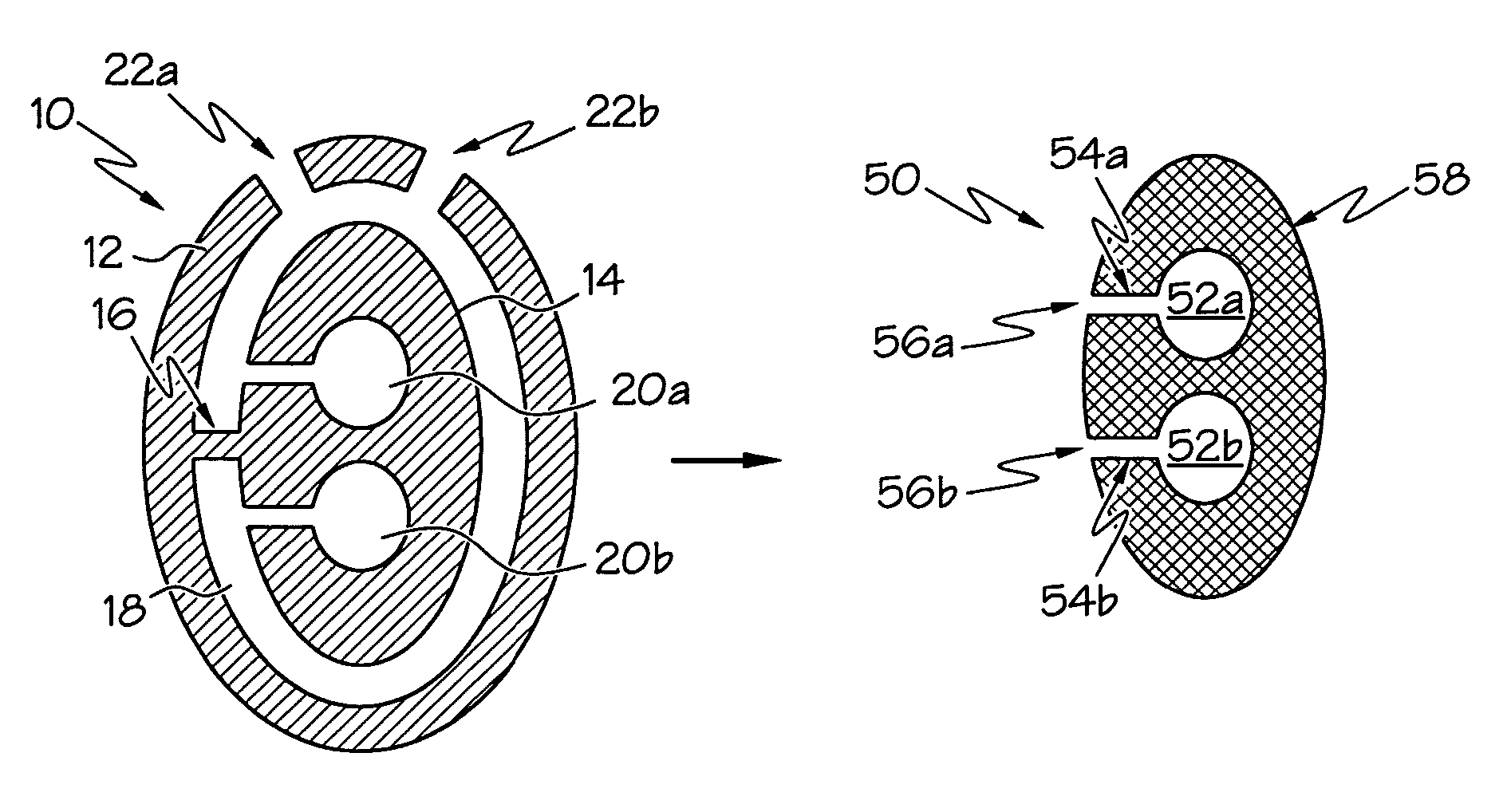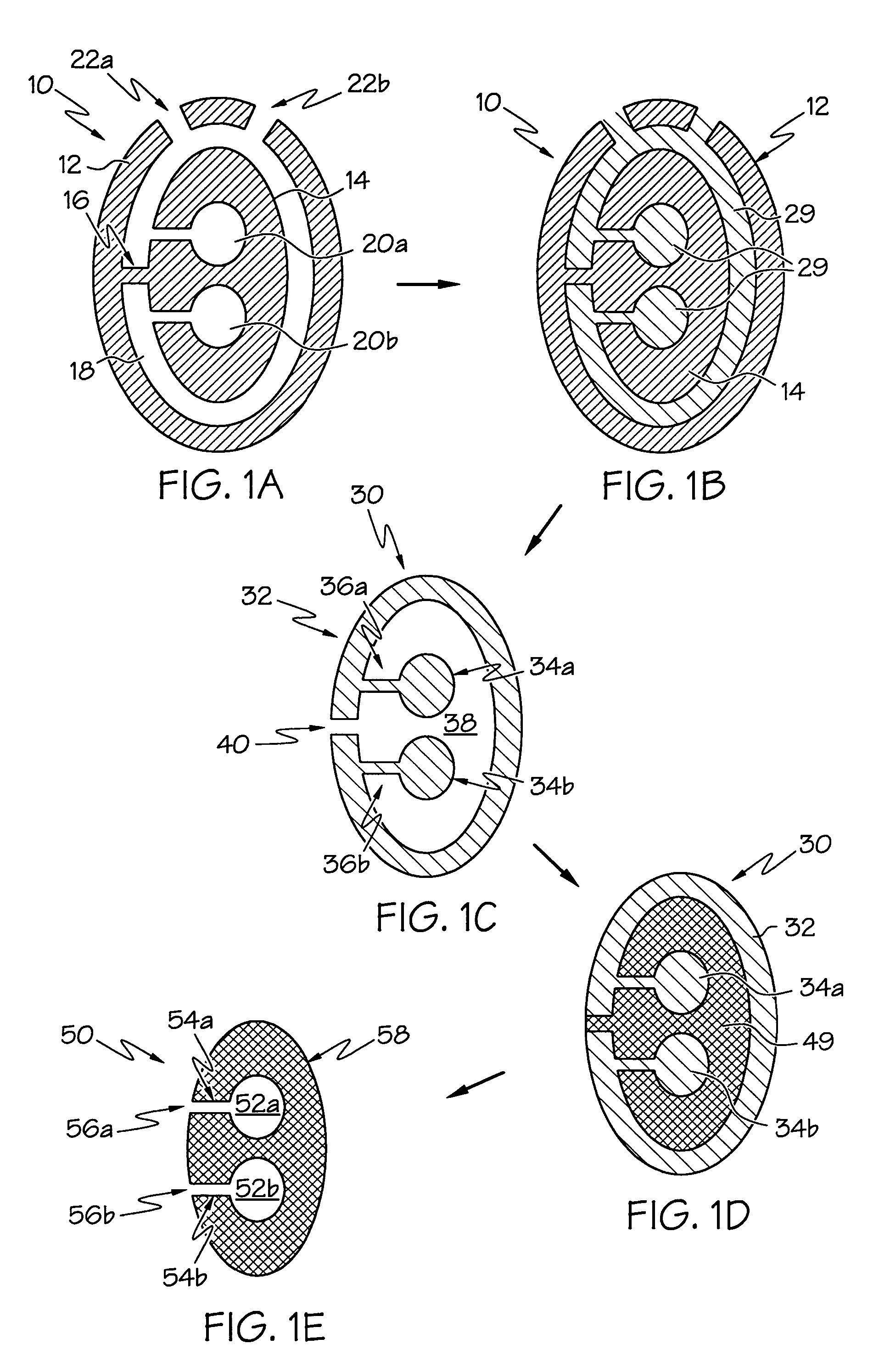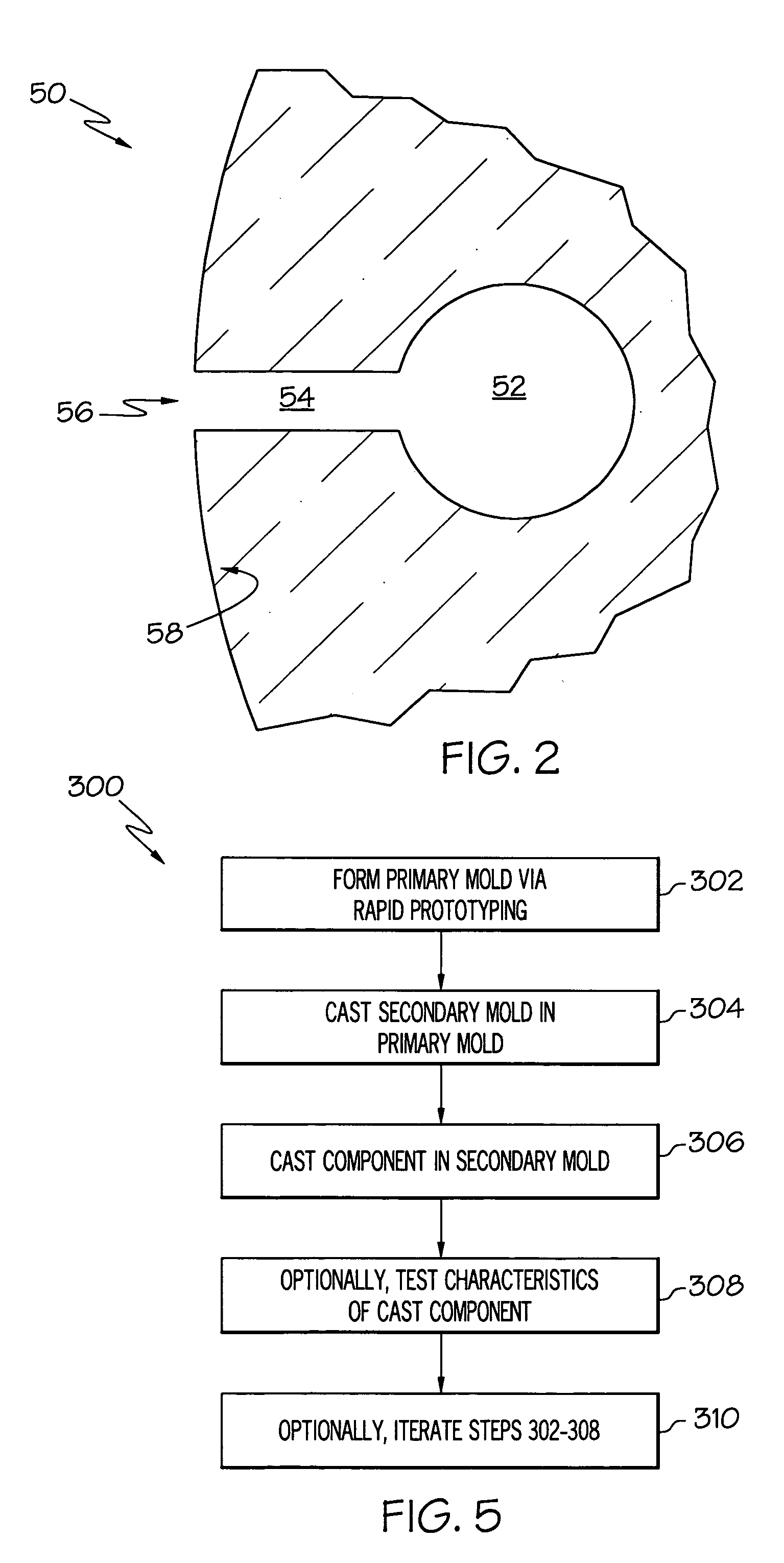Rapid prototype casting
a prototype casting and prototype technology, applied in the direction of foundry moulding apparatus, manufacturing tools, foundry patterns, etc., can solve the problems of complex geometry of components, difficult casting, and high cost of tooling for such parts, and achieve the effect of reducing production costs and time-consuming
- Summary
- Abstract
- Description
- Claims
- Application Information
AI Technical Summary
Problems solved by technology
Method used
Image
Examples
Embodiment Construction
[0020] The following detailed description is of the best currently contemplated modes of carrying out the invention. The description is not to be taken in a limiting sense, but is made merely for the purpose of illustrating the general principles of the invention, since the scope of the invention is best defined by the appended claims.
[0021] Broadly, the present invention provides metal components and methods for making such components. The present invention may be used to provide metal components having complex geometry and one or more internal voids therein. The present invention may incorporate a rapid prototyping process to decrease time between iterations in designing metal components having complex geometry, and to shorten production lead-time of the metal components. As a non-limiting example, the present invention may be used to form metal rotor blades and stator vanes for a gas turbine engine. Such blades and vanes may be hollow, may be single- or double-walled, and may ha...
PUM
| Property | Measurement | Unit |
|---|---|---|
| thickness | aaaaa | aaaaa |
| thickness | aaaaa | aaaaa |
| lead-time | aaaaa | aaaaa |
Abstract
Description
Claims
Application Information
 Login to View More
Login to View More - R&D
- Intellectual Property
- Life Sciences
- Materials
- Tech Scout
- Unparalleled Data Quality
- Higher Quality Content
- 60% Fewer Hallucinations
Browse by: Latest US Patents, China's latest patents, Technical Efficacy Thesaurus, Application Domain, Technology Topic, Popular Technical Reports.
© 2025 PatSnap. All rights reserved.Legal|Privacy policy|Modern Slavery Act Transparency Statement|Sitemap|About US| Contact US: help@patsnap.com



